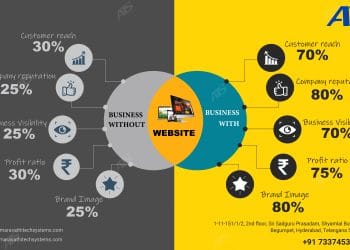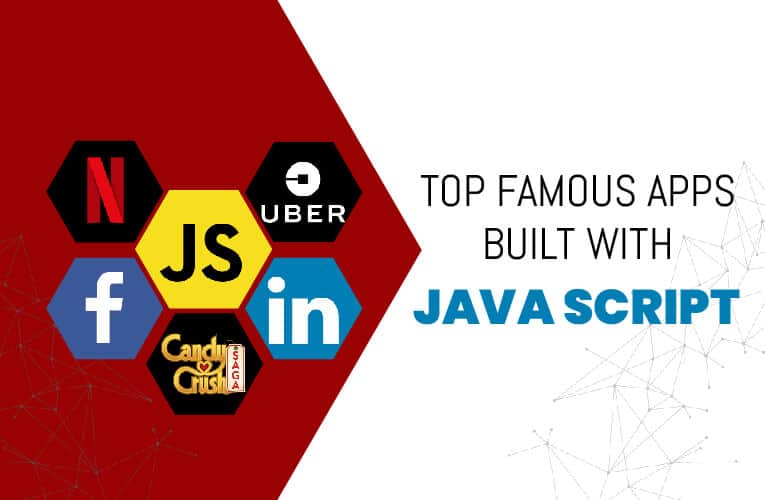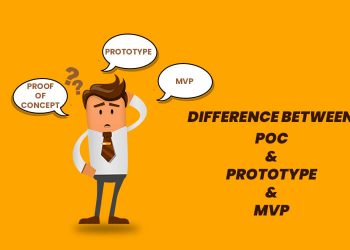When existing companies incorporate the latest concept in the framework, several organizations struggle to follow the right approach by failing to assess the idea and validate its viability. The development of new products means that end-users are satisfied by developing products that can help them solve problems. We have seen it many times and often fortune 500 companies can not attract their consumers when it comes to the introduction of a new product. Did you ask why? Let us, therefore, follow the matter without further hesitation.
We’ll talk about the principles of POC vs MVP, the perfect start-up strategy. All of these conditions apply to organizations in record-welcome pre-crop, definition, and seed stages! At the very beginning of product growth, challenges that face each company in selecting an MVP, POC, and Prototype can often lead to wrong selection. This can lead to leakage of funds and total business growth in your company. According to a Project Roadmap, MVP vs Prototype approaches can be used jointly or separately.
An Overview of MVP, Prototype, and POC
POC – Proof of Concept
A Design Proof is a small project used to verify technological principles like technology, technology, and integration. If the concept is already available on the market, it is not necessary to produce a POC. When the startup is innovative, it is an unpredictable idea to incorporate the latest concept in practice. It is used before market launch and before production of the product.
Concept proof is not open to any customer openly which can not be used, since it checks whether the idea is functional. The POC application creation helps you to evaluate whether the product is functionally defective, depending on the initial analysis. It could be aborted, or modified at the beginning if it doesn’t work. What is the approach you take with the POC? POC is a validation method for a single product.
Have a sneak peek at the benefits of executing the POC approach:
- The initial investors are appealing. A POC attracts the best investors and investors ready to finance tested concepts.
- It saves a great deal of time. In a short time, POC will make sure you are aware of whether you can execute your project and move to the next stage of startup growth.
- Make the right decision. You may build several POCs with various technologies to reduce major risks.
- Keep the race in front. A POC is an economical way of developing a modern and unique product that revolutionizes the enterprise.
How Does a Proof of Concept Work?
POC has two options – yes or no – if you are unknown about the viability of the ideas. You will continue to develop your project with a positive response, while the adverse reaction would not allow you to continue a potentially unviable project. The POC process flow is not intended to be presented to your users as part of an internal solution, but rather to solve serious problems. However, it may become your advantage to give your future investors in seed financing.
Prototype
An interactive mirror is a prototype that shows the key design elements and the user flow. It focuses on the identification of the product look and on an awareness of key workflows of projects to be included in the process. What is the prototype of a mobile app? This shows how an app flows from screen to screen and how the app is created.
Before starting your project you should imagine the UX. Many people are confused about Prototype vs. Idea proof. The fundamental distinction between POC and Prototype is that the former shows whether the product or functionality can be created or not. With the prototype approach, what do you achieve?
Have a look at the benefits of implementing a Prototype for your startup:
- Validation of design concept: You can run many tests on a design before the desired output is obtained.
- Resource savings: It lets you identify possible design defects, avoid rework and decrease unnecessary expenses before product production.
- Immediate feedback: You get direct feedback from live prototypes when you test the prototype that can help you discover, correct, and continue to build downsides quickly.
- Initial investment: Your investors will demonstrate a tried-and-tested prototype with a good look, and you can persuade them that your project is worth investment.
How does Prototyping Work? How to build a product prototype?
The startup owner defines all device specifications to construct a streamlined introductory design. The prototype is then built and tested. The developer analyses the feedback until you determine the errors and the strengths. The construction of a new system is led by each prototype. The whole system of implementation is replicated up to the final version of the system. This is the most popular approach. This modifies the process flow according to the prototype selected.
Minimum Viable Product (MVP)
What do you mean by Minimum Product Viable? An MVP has a minimum collection of features that will be needed to satisfy its customers and to obtain immediate feedback. An MVP is a functional app with superior application functionality. It allows you to know how your customers are and what they are waiting for. MVP is a primary framework that represents the fundamental version of the system, providing a limited number of users and feedback, ranging from a fundamental definition to nature. It’s a microservice combination that focuses only on one thing at a time. MVP is one of the most demanded methods for product fitness mapping. What is the approach of the MVP?
Here are the main benefits of an MVP:
- Reduced and optimized expenses: MVP is a development device that requires less time and resources and allows you to plan a course.
- A tool for the first user: MVP is not a fully refined commodity but can be produced on the market and get the first successful customer.
- The opportunity to attract the attention of investors: nobody wants to spend on innovations of unexpected consumer demand. A reliable user review from the fully built MVP is excellent proof for investors.
Best Examples of Proof of Concept, Prototype, and MVP
Proof of Concept
Walmart
Walmart POC’s success story Cryptocurrencies are created using Blockchain technology. But Walmart decided to implement this technology by tracking product sources to strengthen its logistics system. The Walmart team has developed a POC to see if blockchain technology is appropriate for this idea. In 2016, two mini products were produced to test technologies for blockchain. One used to chart the origin of mangoes in the United States and another track of meat sold in China by Walmart stores.
Both of these programs were designed to speed up the process by identifying the source of the products tested successfully. Thanks to technology blockchain. They also helped the company monitor the origin of goods, see shipping dates, verify logistics and reach supermarkets in seconds. Today, Walmart implements blockchain technology effectively by extending the features of its blockchain framework.
Prototype
iPhone
The original prototype of the iPhone since 1983 Do you know that the prototype was also started with Apple’s iPhone with a consumer craze? We know it was in 2007, but the company was planning to make a telephone a long time earlier. This picture shows the prototype for the Apple phone touchscreen.
The prototype was then built around 1983. It had a touchscreen and style entrance and a computer in the early 80s was slick. As early as 1983, it seems that the company decided to create a hybrid and touchscreen handset. And in 2007 the first iPhone was unveiled and deemed a groundbreaking cell phone after the testing and improvisation of this prototype.
Minimum Viable Product (MVP)
Because of the launch of iTunes by Apple, the business podcasting company Odeo was under pressure in 2001. They came with the idea of running hackathons to survive on the market. And they concentrated in hackathons on creating new ideas, one of which was a cool SMS message service called “Twttr.” At first, the Odeo staff internally used this concept. Within a little while, workers were trendy that they have begun spending money on the website. And Twitter has been transformed as “Twitter,” one of the most sought-after social media sites.
POC vs Prototype vs MVP: What’s The Difference?
POC, MVP, and Prototype are different from each other, and so is the objective.
| Parameters | POC | MVP | Prototype |
| What is it? | Proof obtained from testing technology, or a new design that shows that a product idea is feasible. | A version of the product that shows its appearance and feel. | A product with a minimum of functionality to satisfy the needs of its users. |
| What is it for? | Demonstrate the viability of a product or test technological solutions to check its potential. | Verifying design concepts | See if there is consumer interest in how this product can be enhanced. |
| How long does it take to develop? | 1 day to several weeks | 2 weeks to 1 month | 2 to 6 months |
| When should you create it? | If you are unsure of the viability of your proposal, or if you can execute anything in many ways. | If you are sure that an idea is feasible and want to test a concept for a product. | Knowing the technological options and the nature of a product and wanting to launch them on the market. |
| How is it tested? | Within the company | Inside the business and a limited target audience. | With a wide target audience |
| When should you show it to investors? | Pre-seed / seed | Seed/round A | Round A / B |
Key Considerations Before Developing an MVP, Prototype, or POC
A few questions should be answered and understood before deciding whether you want a POC, MVP, or prototype. Once you have classified the answers to those questions, you are all willing to choose the right ones.
- Is your idea unique?
- What do you want to verify?
- Is it required to find out if your target audience needs your product?
- Who is your target audience?
- What are your validation criteria?
- What does your business need?
- What are your measures for budget, time, and effort?
- What is your aspired output in terms of production willingness?
- Is your technology for the project discussed?
If the questions mentioned above are YES, you need to go safely from concept proof to prototype to MVP.
POC vs MVP vs Prototype: How to Choose The Best Approach?
When to choose a POC?
A POC is the first phase when a fully developed product is developed. If the following statements correspond to the current objectives, you may apply this approach:
- When you create a new product with a concept you haven’t tested before.
- Before you invest in product growth, you wish to confirm the viability of your project.
- Check the industrial utilities of your commodity to secure your first investment.
- Do not apply the technology previously used to your industry.
- When you want to share with the team members your product and inner information.
When to choose a prototype?
You will switch to the prototype stage after you have created a POC. Certain indications that show you need a prototype to begin developing:
- If you want to visualize the sensation of the product and see how it will function in the long term.
- If you have only minimal time and resources to demonstrate the design and UX flow of your product to draw investors.
- You intend to develop a product with an outstanding user interface and flow.
- When you have a minimum time limit to represent the investors for your idea.
When to choose a Minimum Viable Product (MVP)?
An MVP is not a mature product, but the final stage in its production is considered. This method can be applied in the following:
- In designing your product with the requisite features, you want to spend a minimum of time and cash.
- You want direct input from users, which can provide the basis for further changes.
- When you need more low-cost retention.
From POC to Prototype to MVP: The One But Not the Same
If you want to decide between POC vs Prototype vs MVP, consider designing an individual product.
Here are the benefits of implementing such approaches:
Test the concept: You have the chance to test the idea and consider the target audience before product production.
Fast development: You need a minimum number of features when designing a product using this approach. It will also take more time for a full product to be delivered. Thus, when you develop from POC to Prototype to MVP, your product development will be quicker because there are fewer chances to proceed in the wrong way.
Faithful users: It enables the consumer in your prototype to engage with your product; interest and brand recognition are already being created.
Quick feedback: You can expect a certain amount of time to see and execute your product, but your thoughts do not relate to users. The sooner you receive customer reviews, the sooner user demand can be increased.
Low investment risk: If you ensure a low investment risk, investors are more likely to fund your project.
Wrapping Up
The creation of the product is like looking at a vision. The process begins with the right to build an MVP-supported POC and prototype. The only MVP is a good example of a working product from all these methods. This does not, however, mean that the two other methods do not affect full-stack development.












